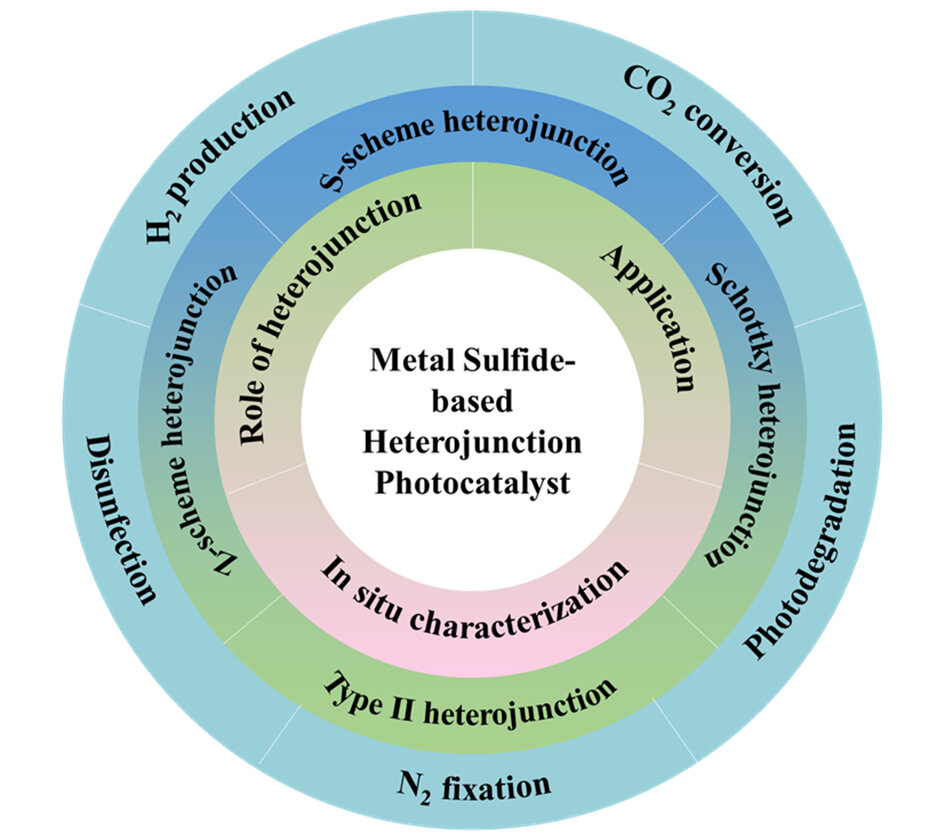Since the advent of the Industrial Revolution, the global economy has undergone rapid development, closely intertwined with the exploitation of natural energy resources. However, this has led to a gradual depletion of energy resources and a growing problem of environmental pollution. Photocatalytic technology has emerged as a green and pollution-free solution that aligns with the principles of sustainable development. It not only enables the production of new energy types but also facilitates environmental remediation.
Metal sulfides, known for their strong reducibility, are considered one of the most promising semiconductor photocatalysts in energy and environmental remediation applications. However, the photocatalytic performance of most metal sulfides is hindered by poor stability and significant charge carrier recombination. To overcome these limitations, the fabrication of metal sulfide-based heterojunctions has been explored as an effective strategy.
A recent research review article published in the Chinese Journal of Catalysis by Prof. Kai Dai and his team from Huaibei Normal University, China, provides a comprehensive summary of the advantages and drawbacks of metal sulfides in the field of photocatalysis, while discussing the role of heterojunctions in enhancing their performance.
The review discusses various synthesis methods for metal sulfide-based heterojunction photocatalysts, including hydrothermal synthesis, ion exchange, electrospinning, and in-situ photochemical deposition. It also categorizes the types of metal sulfide heterojunctions based on electron transfer pathways, such as Schottky junctions, type II, Z-scheme, and S-scheme heterojunctions.
The authors present an extensive overview of the applications of metal sulfide heterostructure photocatalysts, with a particular emphasis on achieving simultaneous desired redox reactions through the efficient utilization of electron-hole pairs. Furthermore, the review emphasizes the importance of in-situ characterization techniques in elucidating the mechanisms of heterojunction photocatalysts.
More information:
Haibo Zhang et al, Metal-sulfide-based heterojunction photocatalysts: Principles, impact, applications, and in-situ characterization, Chinese Journal of Catalysis (2023). DOI: 10.1016/S1872-2067(23)64444-4
Citation:
A review of the latest metal sulfide-based heterojunction photocatalysts (2023, July 6) retrieved 7 July 2023 from https://phys.org/news/2023-07-latest-metal-sulfide-based-heterojunction-photocatalysts.html
This document is subject to copyright. Apart from any fair dealing for the purpose of private study or research, no part may be reproduced without written permission. The content is provided for information purposes only.
Denial of responsibility! TechCodex is an automatic aggregator of the all world’s media. In each content, the hyperlink to the primary source is specified. All trademarks belong to their rightful owners, and all materials to their authors. For any complaint, please reach us at – [email protected]. We will take necessary action within 24 hours.

Jessica Irvine is a tech enthusiast specializing in gadgets. From smart home devices to cutting-edge electronics, Jessica explores the world of consumer tech, offering readers comprehensive reviews, hands-on experiences, and expert insights into the coolest and most innovative gadgets on the market.


